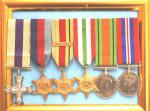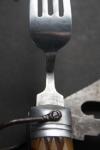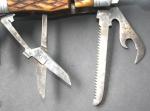-
Posts
13,225 -
Joined
-
Last visited
-
Days Won
22
Content Type
Profiles
Forums
Blogs
Gallery
Events
Store
Everything posted by Mervyn Mitton
-

WW2 Neglected Medal Group
Mervyn Mitton replied to Mervyn Mitton's topic in Great Britain: Orders, Gallantry, Campaign Medals
.................................................................http://gmic.co.uk/uploads/monthly_01_2013/post-6209-0-33471200-1359298140.jpgclick................................ re-mounted and re-ribboned. The ribbon for the MC is an original piece of silk. -
Monty - the pre1949 Met. uniform where the numbers were on the collar always had the pre-fix Div. no. This is certainly not a Div. no. and I don't remember any special units with this prefix. Could it have been a training college ? Not sure where they were in 1880 - although I should think Peel House was in existance.
-
Monty - the copies I have in the UK are not all signed. Perhaps the one from Dave will be better. I did a special offer to PICA (Police Insignia Collectors Assoc. ) of which I am a member - I think it was 20 pounds incl. p&p in the UK. Certainly on the book forums it seems to sell 2nd hand for around the 40/50 $ mark. I have seen it on at $75 - but that's a silly price. I've always found it strange that up to 40/50 books a month are published with a military theme - but, the only books on Police - collecting and history, not just Force histories , has been mine (1985) Dixon (1952) and Fenn Clarke (1932). Both of the last two were privately published in small numbers and Fenn Clarke can sell for up to 200 pounds - dependent on condition. He actually lived as a young boy when PC's still wore top hats. I don't go back quite that far.................... Mervyn
-

sabretache
Mervyn Mitton replied to blueman's topic in Great Britain: Militaria: Badges, Uniforms & Equipment
Kevin - the leather sabretache is of a pattern usually for staff officers - and not attached to a Regiment. You will find that the back opens and it has puches for despatches, notes etc.. I have had a quick look for the 7th. - I thought Hussars but , it doesn't match. Perhaps someone else will have an idea ? Mervyn -
The gold band must indicate a sergeant or, inspector. I have a couple of examples but they don't have this band. Their main purpose - of course - was to patrol trains and railway property. However, they were well armed and provided a quick back-up force for the SAP. The very serious riots in - I think 1959 - saw exactly this happen. Ten thousand rioters marched from Westville along the main road to Durban. All available SAP were mobilised and managed to hold them. A further 10000 (these are Police figures from the time) came over Berea via the University - a single Colonel and his driver turned them back . (OH! for the days when the police had some authority. With the poor communications of those days it wasn't realised that (approx.) another 10,000 had crossed away from the others and proceeded to march down West Street - the long main street of Durban. As they passed shops and offices thay forced their way-in and forced the Zulu staff to join them. Their target was the old central Durban prison - now long demolished. The only people to defend it were 30 Railwayt Police - armed with revolvers and .303 rifles. Myself and a friend who worked for the evening newspaper had followed along at the back. (I was 23 at the time - an age when we don't think straight) When the mob arrived in front of the Prison they were chanting and singing Zulu fighting songs - the square of the prison walls was at an angle across the top of the actual gates. The 30 Railway Police lined this - aiming at the crowd. I always remember an old Warrant Officer coming up to the two of us and saying - 'I'd move if I were you lads - we're going to open fire and you're in line'. Boy - we moved to the side quickly. THey never had to fire - they followed instructions - laid down all their weapons and walked off. This would never happen today. We stayed to watch and it took 3 x 3 ton lorries to remove all of the weapons. Many of them were lovely old spears and knobkerries - I still kick myself today for not keeping a few - they are worth a lot of money 52 years later. Mervyn
-
Thankyou Dante - nice to have that confirmation - and also we now know your past career ............ This new identification changes the past threads - but, only with regard to this picture. I am still a little confused as to why the prisoners and the guard appear to coloured. I can only think now that the original photo must have 'darkened' them ? We have said several times that the Prison Service is a neglected collectors field - along with Customs and Fire Services. Perhaps now would be a good time for some good articles and photos - the earlier the better. Although this is a Police Forum, I am sure that Brian will go along with me that these other Services will fit well - after all, we are the 'Essential Services'. (with Ambulance) Mervyn
-

Rare?
Mervyn Mitton replied to Robin Lumsden's topic in Great Britain: Militaria: Badges, Uniforms & Equipment
I certainly agree with for tank use - however, there is always the possibility of sniper's - who had heads over trenches. -

British helmets collection
Mervyn Mitton replied to pjac's topic in Great Britain: Militaria: Badges, Uniforms & Equipment
Patrick - some really lovely additions to your collection. Do you think with the Staffordshire Yeomanry helmet that they painted it to look look like an officer's pattern - would have increased the price if the buyer didn't know his helmets ? I don't collect helmets - just the odd example - but I must say a collection like yours could quickly convert me. I wish Stuart was still here to see these - but, sadly not. Mervyn -

A Very,very, very old soldier
Mervyn Mitton replied to Ulsterman's topic in Great Britain: Orders, Gallantry, Campaign Medals
Larry - cheeky sod ! Mind you I feel like him sometimes............ -

Historic Shellcase ?
Mervyn Mitton replied to Mervyn Mitton's topic in Great Britain: Militaria: Badges, Uniforms & Equipment
.................................................................http://gmic.co.uk/uploads/monthly_01_2013/post-6209-0-51683300-1359124695.jpgclick.................................... What is of even more interest is that the shell is for a Creusot 105mm field gun. Berndorf - is I think, a German company. The Creusot 105mm was of French manufacture and supplied to the Boers - who used it to great effect during the Boer War (1899-1902) For my money - this makes it a really unique item - and makes fun of everyone. We have a French gun - used by the Boers to shoot at the innocent British troops - using German ammunition - and being fired by the British to mark the defeat of Germany - whilst in the former Colony of that Country. There seems to be a rather ironic situation here.......... Mervyn -
...................................................................http://gmic.co.uk/uploads/monthly_01_2013/post-6209-0-02820600-1359124172.jpgclick........................................ This fine brass shellcase has been engraved with the detail that it was part of the Honour Guard which fired a salute on the signing of peace with Germany in 1919. What is actually of significance , is that WINDHUK was the capital of German South West Africa. The spelling was later changed to the Afrikaans WINDHOEK. So, the salute was being fired to show the defeat of SWA's former Colonial Masters. We had invaded in 1916 - and Sth. Afrika was given permission by Britain to be the Administrators. Later, this matter went before the League of Nations amd a Protectorate was given to SA which continued until SWA became Namibia in the 1990's.
-
Oldscrew (first name please ?) welcome to GMIC . If we can establish this to be Dartmoor - that will be good. However, how do you account for the skin colour of most of the convicts - and the guard on the left ? Might the Cape authorities who would of been responsible if this is South African - have copied a prison they could have been familiar with ? I appreciatiate with your Avatar that you are /were a British Prison officer - however, do you have any photos from that period that would show this view ? Mervyn
-

Royal Artillery spoon
Mervyn Mitton replied to Noor's topic in Great Britain: Militaria: Badges, Uniforms & Equipment
Timo - I suspect that it is a 'one off' - perhaps made in a base workshop. The spoon looks continental and the marks are not hallmarks as it is silver plate. The chain was probably on the original sweetheart brooch for security. A nicely made item - what does the back look like ? Mervyn -

WW1 British Officers' Knife
Mervyn Mitton replied to Mervyn Mitton's topic in Swords & Edged Weapons
..................................................................http://gmic.co.uk/uploads/monthly_01_2013/post-6209-0-22744500-1359035935.jpgclick.................................... Close-up of the fork opening mechanism -

WW1 British Officers' Knife
Mervyn Mitton replied to Mervyn Mitton's topic in Swords & Edged Weapons
.............................................................http://gmic.co.uk/uploads/monthly_01_2013/post-6209-0-15903400-1359035707.jpgclick............................... From left - corkscrew - small skinning knife - Awl - file/screwdriver -

WW1 British Officers' Knife
Mervyn Mitton replied to Mervyn Mitton's topic in Swords & Edged Weapons
.............................................................http://gmic.co.uk/uploads/monthly_01_2013/post-6209-0-19950200-1359035463.jpgclick............................... From left - scissors - saw1 - bottle opener/tinopener -

WW1 British Officers' Knife
Mervyn Mitton replied to Mervyn Mitton's topic in Swords & Edged Weapons
............................................................http://gmic.co.uk/uploads/monthly_01_2013/post-6209-0-62664800-1359035200.jpgclick............................. From left - Spoon - cutting knife - hoof knife (for trimming horses hooves) - scissors -

WW1 British Officers' Knife
Mervyn Mitton replied to Mervyn Mitton's topic in Swords & Edged Weapons
This shows the kife with all of the attachments open. ..............................................................http://gmic.co.uk/uploads/monthly_01_2013/post-6209-0-55961100-1359034980.jpgclick.......................... -

WW1 British Officers' Knife
Mervyn Mitton replied to Mervyn Mitton's topic in Swords & Edged Weapons
.............................................................http://gmic.co.uk/uploads/monthly_01_2013/post-6209-0-29224300-1359034770.jpgclick................................ -

WW1 British Officers' Knife
Mervyn Mitton replied to Mervyn Mitton's topic in Swords & Edged Weapons
............................................................http://gmic.co.uk/uploads/monthly_01_2013/post-6209-0-81625000-1359034660.jpgclick........................... -

WW1 British Officers' Knife
Mervyn Mitton replied to Mervyn Mitton's topic in Swords & Edged Weapons
...............................................................http://gmic.co.uk/uploads/monthly_01_2013/post-6209-0-04926500-1359034408.jpgclick.................................. -
............................................................http://gmic.co.uk/uploads/monthly_01_2013/post-6209-0-93793900-1359033503.jpgclick.................................. Most people today think that a multi purpose pocket knife will be a Swiss Army Knife. First made in 1891 they were probably the first purpose made pocket knife with a variety of blades. Later made by the firm of Victorinx they still make a variety of styles - but, in my experience , despite a number of inset tools, they rarely seem to get the use they deserve. Perhaps just too small and fiddly ? The knife illustrated here , is a British Army Officer's private purchase pocket tool from the first World War. Large enough to really work and with a well chosen variety of tools that would be useful in the trenches. There is no maker's name - however, stamped on the fork and spoon is the wording 'stainless'. The outer covering is from stag's horn and overall it is about 6 inches long.(15cm). This makes a handle that can be properly used when the tools are extended. I will show views of the outside and then follow these with the tools.














